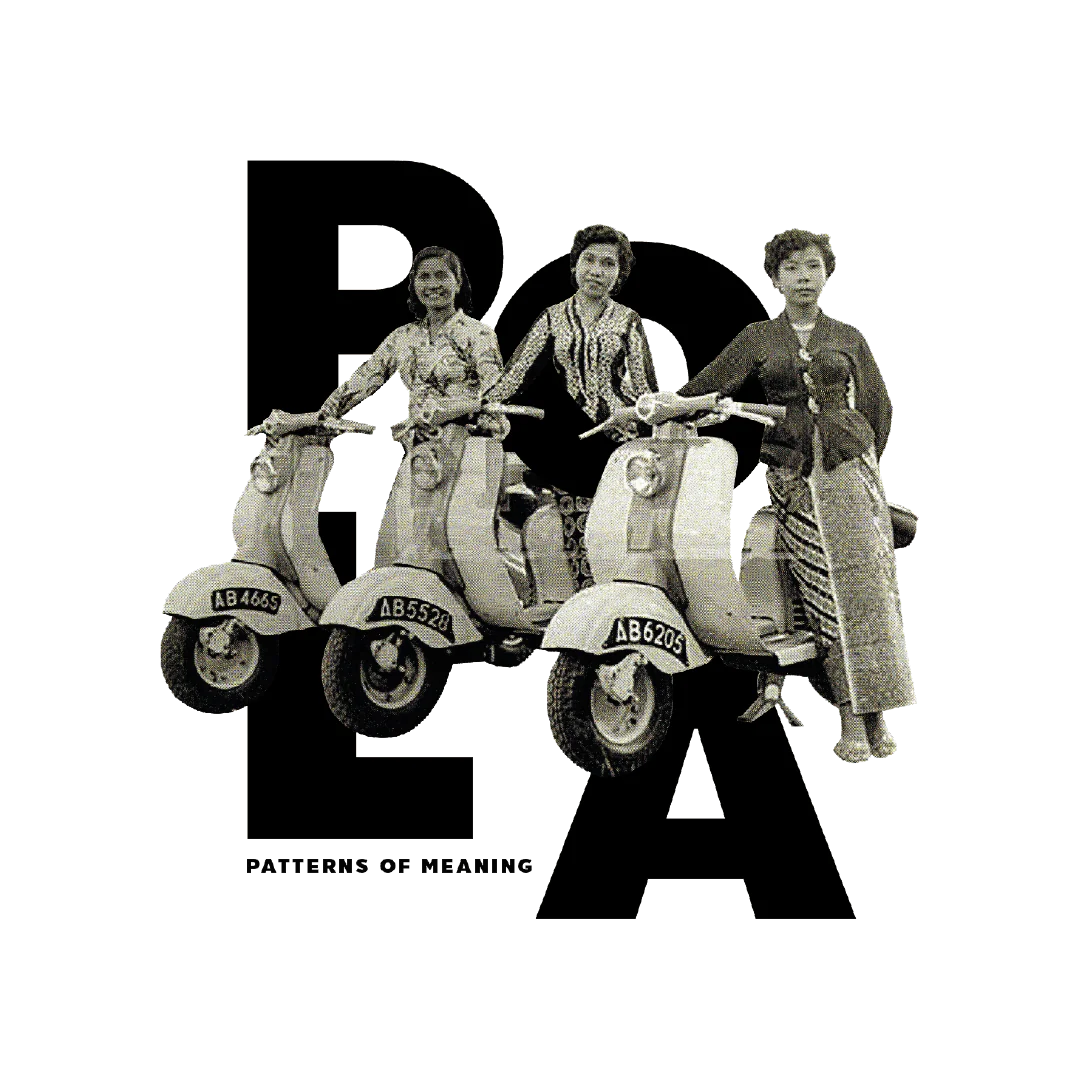
Exhibitions /
EN THPOLA – Patterns of Meaning
The Batik and Contemporary Art from Indonesia
The Jim Thompson Art Center and Danar Hadi Museum, Surakarta are pleased to present POLA – Patterns of Meaning Exhibition, curated by Mella Jaarsma, a leading Dutch artist and curator based in Yokyakarta, Indonesia. The exhibition is the intersection between the traditional batik from the Danar Hadi Museum Collection and the new commission works by Indonesian contemporary artists. It explores the significant role of the batik in Indonesia’s history and cultural identity. The meaning of batik has changed over the years and its connotations relate to the various aspects of Indonesian culture and society.
A group exhibition featuring:
Ace House Collective
Cahaya Negeri
Eldwin Pradipta
Restu Ratnaningtyas
With participation of the Danar Hadi Museum, Surakarta,
and supporting artists: Angki Purbandono, Jim Allen Abel, and Terra Bajraghosa
Curated by: Mella Jaarsma
Research by: Arham Rahman
Artists, Curator, Researcher and Danar Hadi Museum, Surakarta
Mella Jaarsma says about Batik, “When we look at batik developments in Indonesia, we realize they reflect cultural transfers and changes while they also contribute and relate to political and economic policies. Currently, if we go to the local market to buy batik, we will find piles of cotton silk-screened with batik motifs, fulfilling the demands of batik trends with cheap mass production. When we talk about batik, are we talking about the technical aspects of the wax application and dye techniques on a woven fabric? Or, is this about batik motifs and patterns? There are various definitions and interpretations to sort through as we try to understand the meaning of batik in its cultural context.”

A part of the historical collection of the Danar Hadi Museum in Surakarta has been selected for this exhibition to reflect upon various aspects:
- Batik as Identity
- Environmental and Foreign Influences
- Gender
- Political Developments
- Batik as a Commodity
These batiks will be shown together with archival materials and related works by contemporary artists from Indonesia, and we are pleased to announce the following artists participating in the Pola Exhibition:
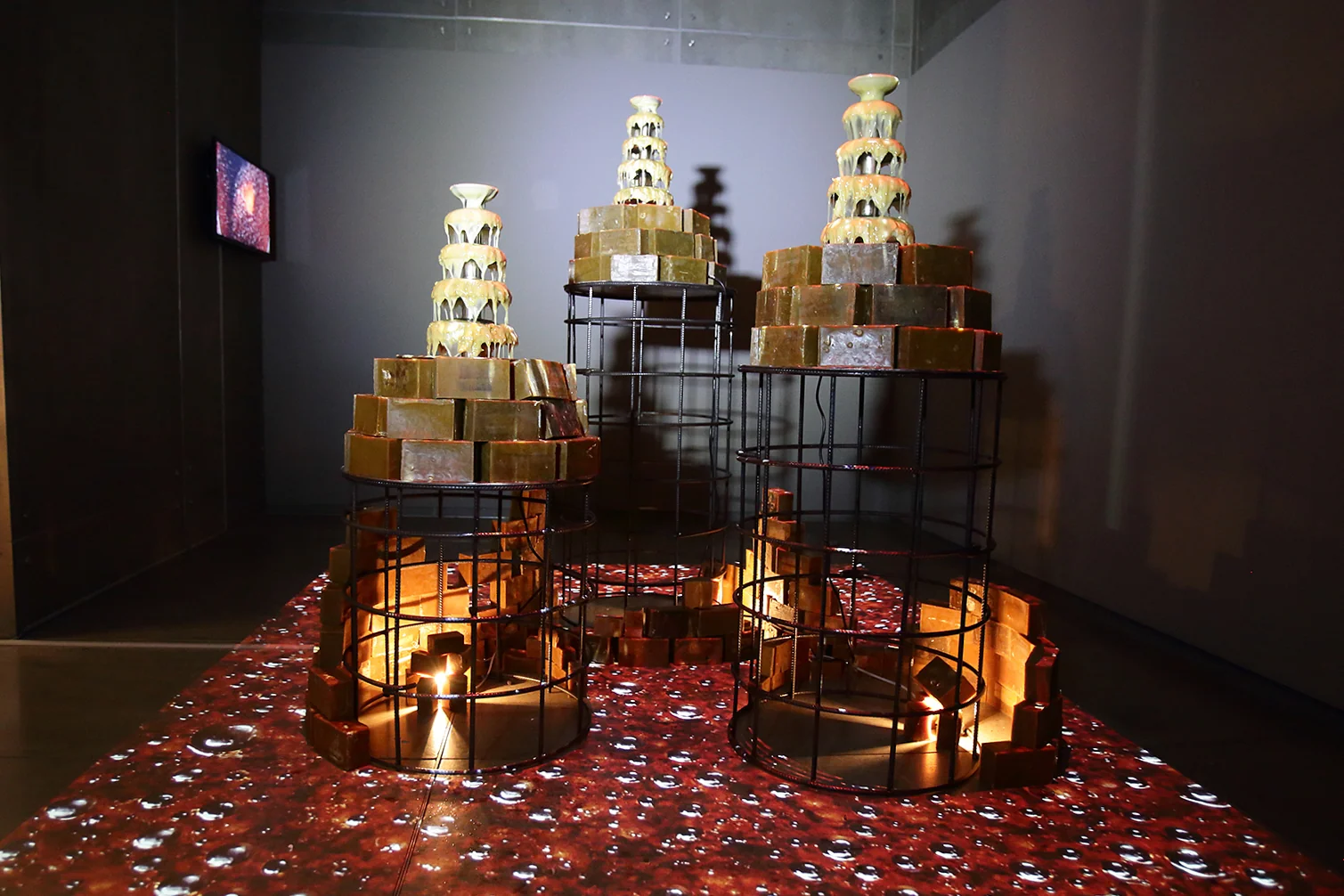
Fervent Base, is a sculpture Installation using chocolate fountain machine, batik wax, paraffin, iron techniques. This is a single channel video installation by the artist group Ace House Collective. This work examines the batik manufacturing process at the present time as batik is generally known for its motifs and characteristics, and no longer for the traditional production method.
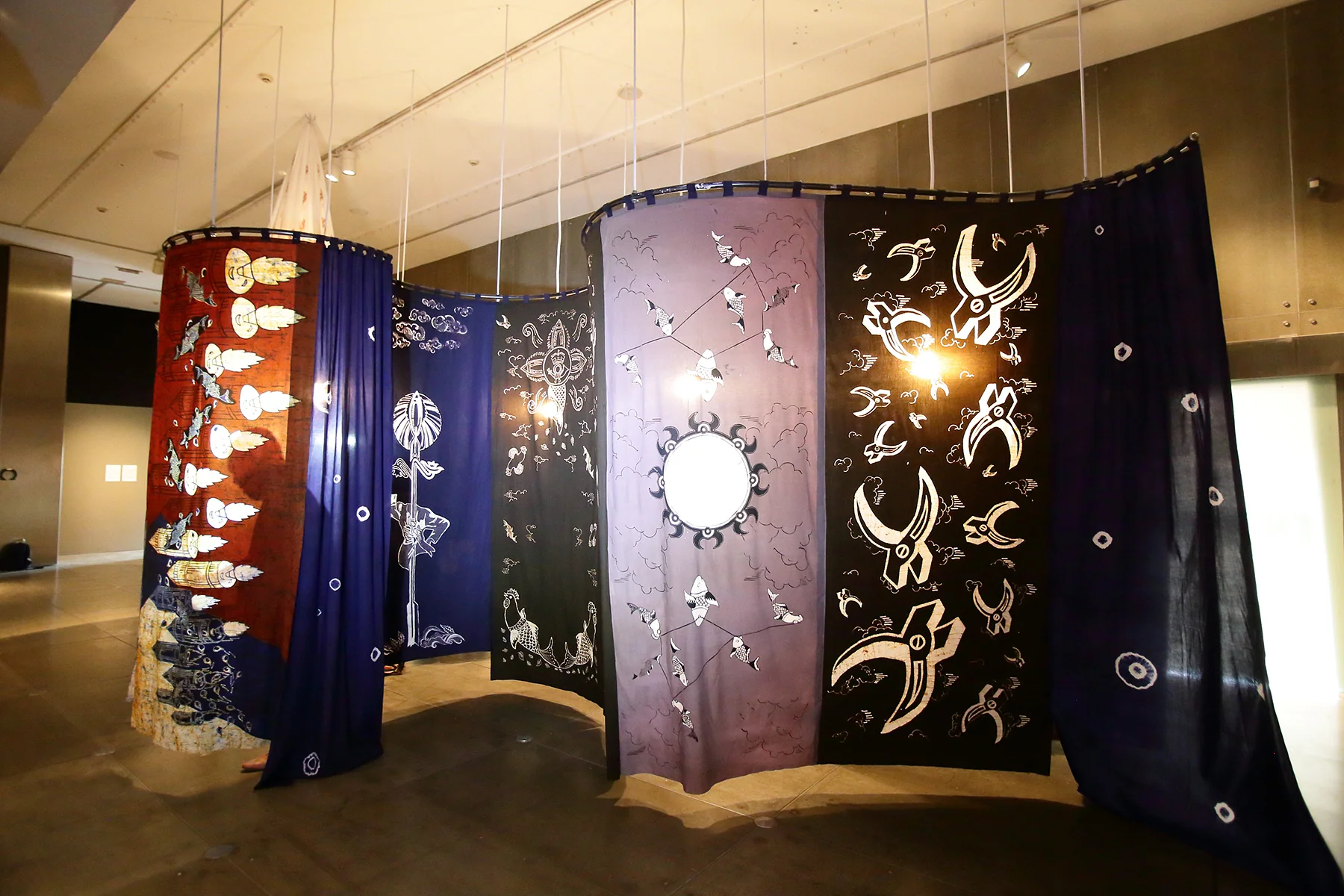
Significant Scenarios is an installation of batiks on cotton by the artist group Cahaya Negeri. We found a significant difference between ornaments and motifs in batik. As we understand, ornaments are batik designs that do not refer to any narrative. There are batik designs that are “empty of meaning” and used generally for decoration, but there also designs that contain cultural and historical context with meaning embodied in designs dictating social history, context, and protocol. The audience is invited to enter a batik structure that resembles a labyrinth. Whereas batik is usually worn when entering the batik labyrinth, the audience will be surrounded by various sensations of new visual motifs that are composed of ornamentation, aromas, light play, and leveling gimmicks that involve gestures and postures of the viewer. The audience will meet facades of motifs, and the shadows of the viewers’ bodies will merge with the entire scenario.

Regrowing: Hierarchy, Cotton, Indigo, Synthetic Color, and Tapioca is a single artist show by the artist Restu Ratnaningtyas.This work is based on her interest in women’s position in the batik industry that is not limited to their role as laborer (usually applying the wax to the cloth), but also as the “locomotive” that steers a batik home industry. This work strives to translate these concepts and perhaps, in general to encourage us to question the models of gender relations in other cultural practices that tend to position women in subordinate roles.
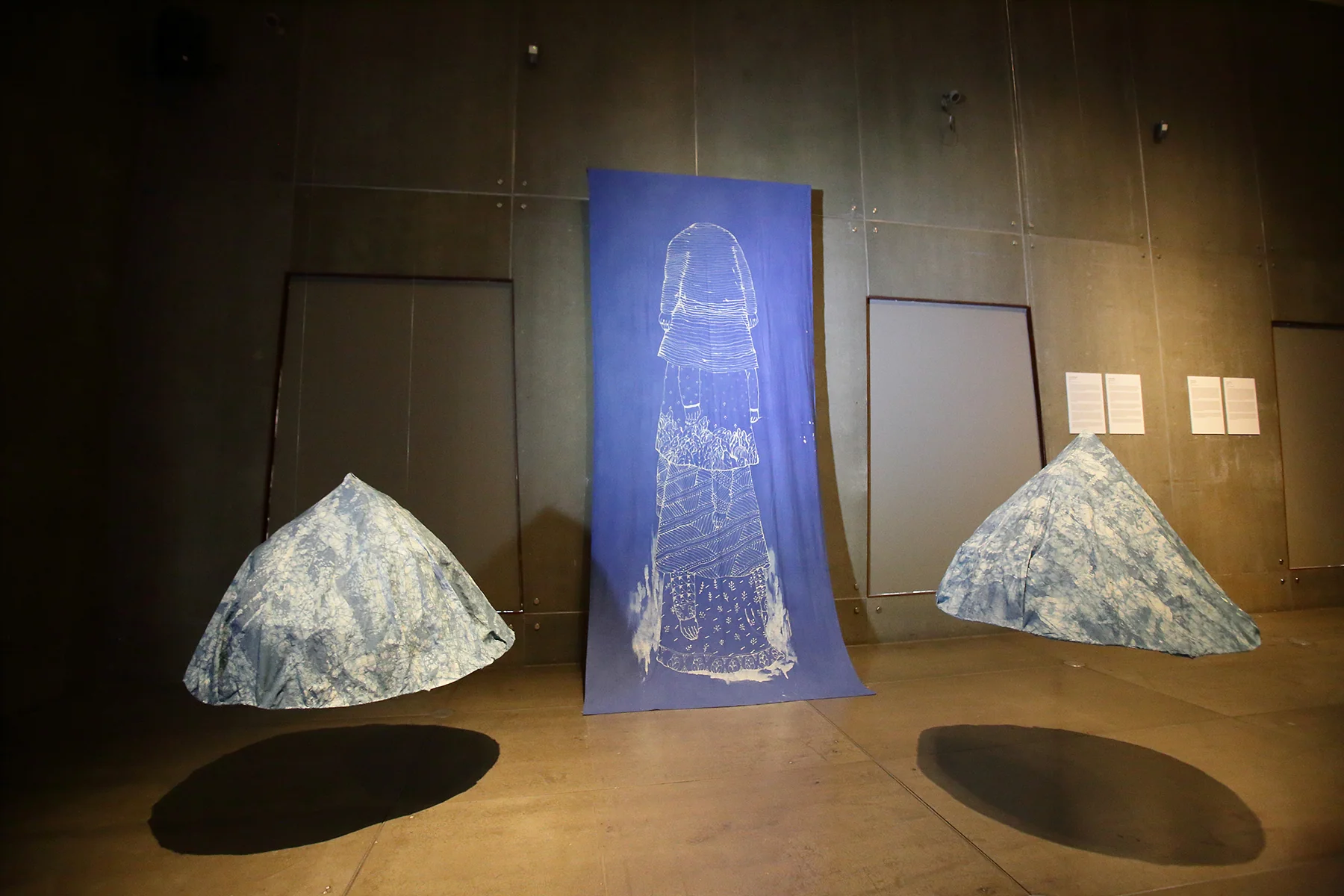
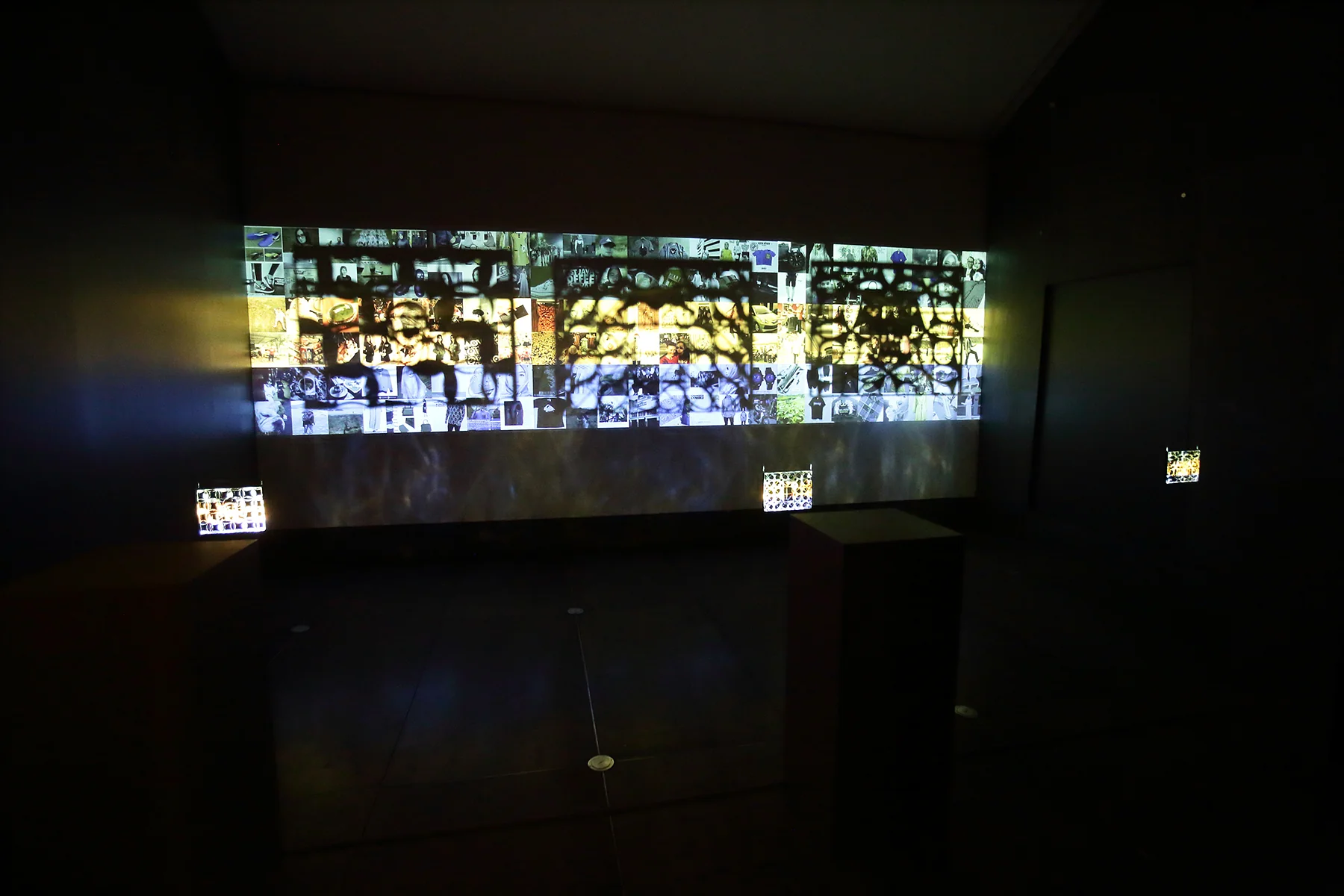
The final single artist show is Shadow Stamp / Tjap Bayang. This is a three video projected through copper stamps of batik design by the artist Eldwin Pradipta. This piece grows out of two previous works that concern the commodification of the culture and history of the city of Bandung, a city with
a colonial inheritance. Thus, this piece reexamines the position of batik in Bandung as a commodity and as an element of local identity. Batik is one of
the cultural traditions and is imbued with philosophical values. However, because of subsequent development throughout the years, the traditional values originally embodied in batik have lost their importance. This work is a celebration of presenting contemporary batik motifs that are not imbued with traditional philosophy and do not have ties with collective social values.
This exhibition is made possible by the generous support of the James H.W. Thompson Foundation, Jim Thompson Thai Silk Company in collaboration with The Danar Hadi Museum, Surakata, Cemeti Art House, Yogyakarta, and Lotus Arts de Vivre, DC Collection, Bangkok.
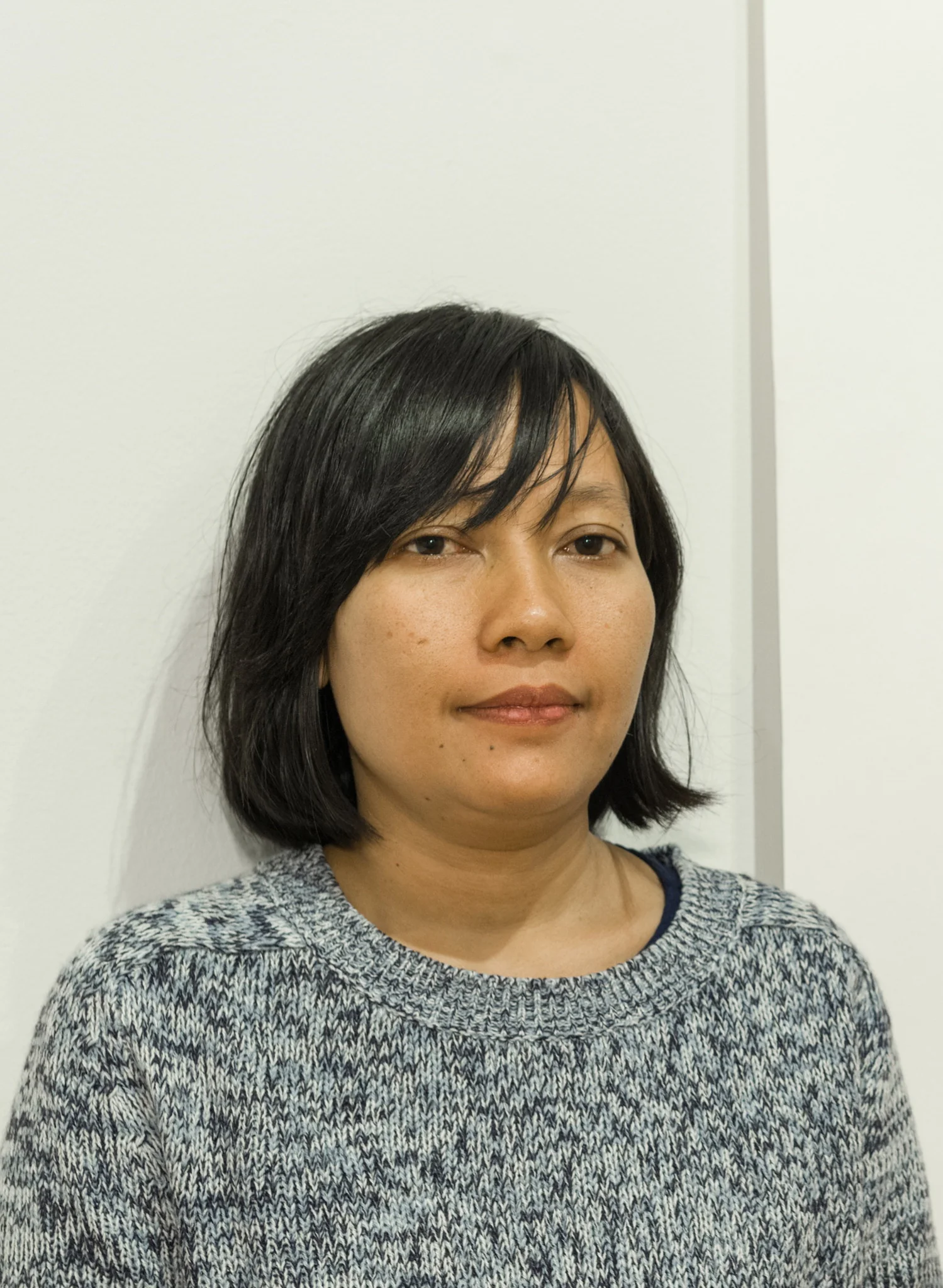
Restu Ratnaningtyas
Indonesia, 1981
Artist
Restu Ratnaningtyas was born in Tangerang, Indonesia, in 1981. Her love for art matured through her youth and studied art from 2000 till 2003 at the Jakarta State University.
With a creative flourish, Restu has shown talent with varying media. She primarily works in video art, watercolor, painting, and installations, with a focus on daily life. Her focus on small objects reminds the audience there must be balance in human lives.
In addition to solo shows - ‘Memento: Privatization Room’ at the Vivi Yip Art Room, Jakarta (2008) and ‘Tantrum’ at the Kedai Kebun Forum, Yogyakarta (2016); and ‘Subsume’ at Baik Art, Los Angeles (2017) - Restu has participated in group exhibitions internationally, including ‘mnēmonikos: Art of Memory’ in Bangkok, Thailand (2013); ‘Dobrak’ at Cemeti Art House, Yogyakarta (2013)and the Yogyakarta Biennale, Indonesia (2013); ‘The Roving Eye’ in Istanbul, Turkey (2014); and most recently at the BAIK Art Residency exhibition at the Van Every/Smith Gallery in North Carolina, USA.
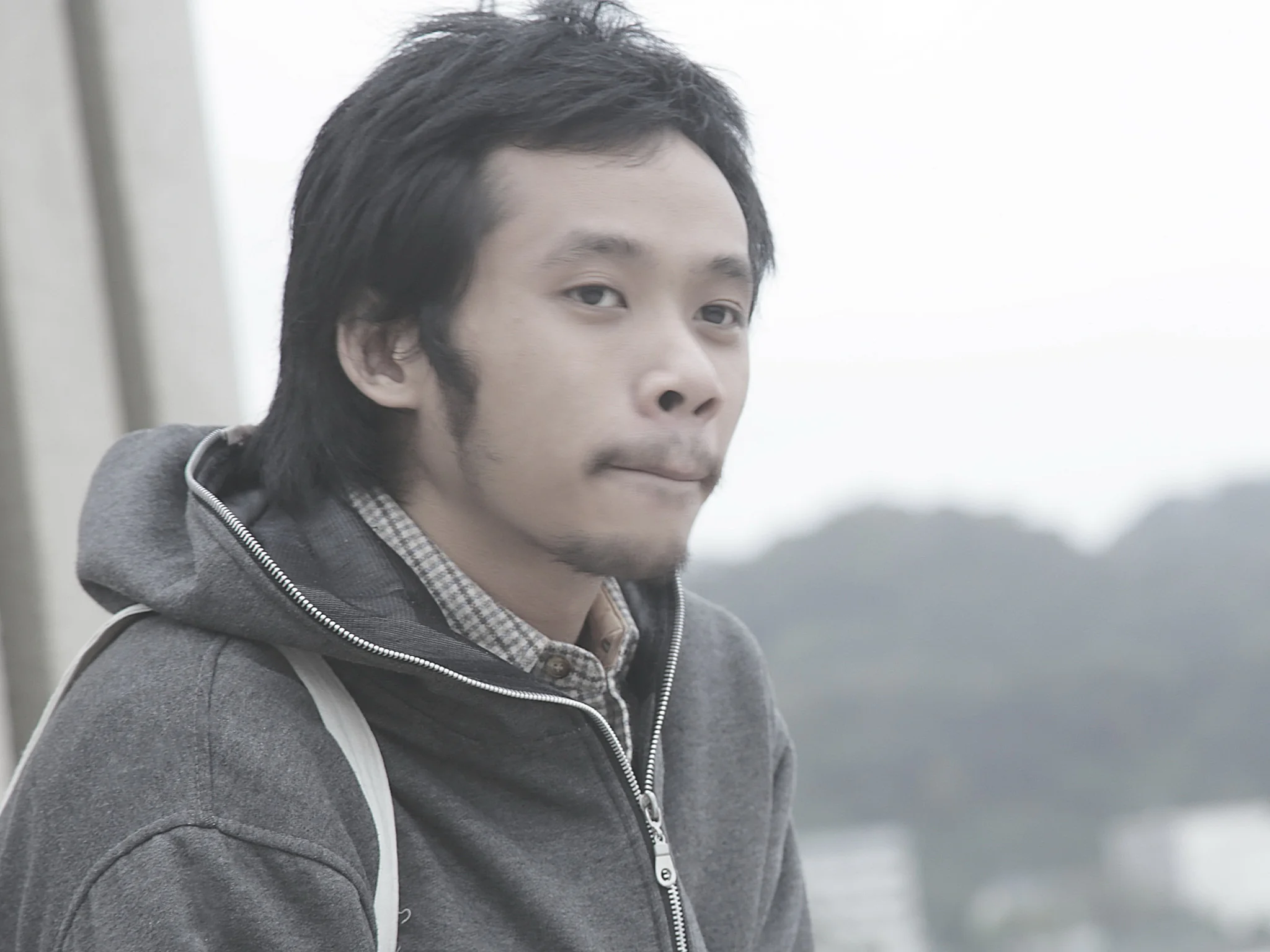
Eldwin Pradipta
Jakarta, Indonesia
1990
Artist
Eldwin Pradipta, was born in Jakarta in 1990. Graduated from Faculty of Art & Design, Institute of Technology Bandung (2013), majored in inter-media art, currently lives and works in Bandung, Indonesia. His works mainly explore video and digital projection as a medium. For him, new media has an interesting position between high art and low art distinction. His works often focuses on the subjects of history and populism or low art in Indonesia, in juxtaposition and dichotomized with objects and praxis of high art. He explores issue concerning cultural commodification and the impact of the global tourism industry.
He exhibited in many group and solo exhibitions in Indonesia and abroad like LOOP Festival, La Virreina Centre, Barcelona, Spain -Seite Festival 2014, Zeitraumexit , Mannheim, Germany- Mapping the Unmapped, Fukuoka Asian Art Museum, Fukuoka, Japan. (2014) and did an residency at Cemeti Art House, Yogyakarta in 2015. He won the Young Artist Award of Art|Jog|14, Yogyakarta, Indonesia.
Cahaya Negeri
Artists
Cahaya Negeri is an artists’ initiative by Doni Maulistya, Nindityo Adipurnomo and Linda Mayasari founded in 2015. They create collective art projects with the aim to redefine hope and desire in the midst of the recent complex reality and political dynamics. They are looking for new interdisciplinary approaches and use diverse artistic methods. In 2015 they created ‘Religion Got Talent’ participating at the Seni Indonesia Berkabung project, at PKKH-University Gajah Mada Yogyakarta. In 2016 they initiated the multi-disciplinary project ‘Pesta Senam Kreatif’ in collaboration with Studio 8 Dance at PKKH-University Gajah Mada Yogyakarta, Indonesia.
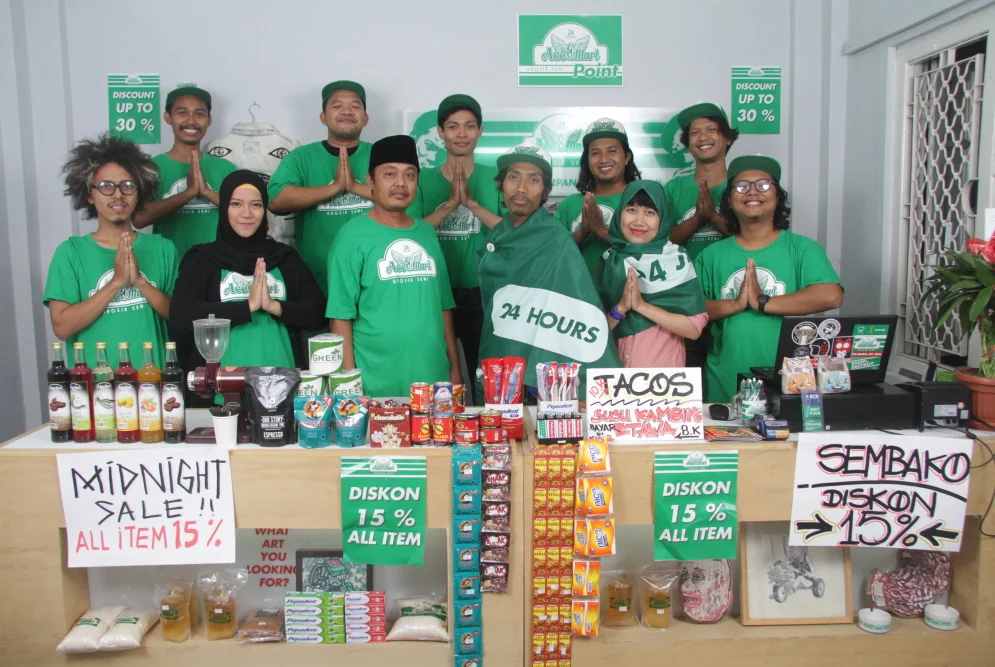
Ace House Collective
Artists
Ace House Collective founded in 2010, is an artists’ collective, which is active in the field of youth and pop culture and has eleven memebers. Ace House Collective’s artistic vision aims to address the role and function of contemporary art in society today. They generate projects that use the idea of a fictional institution as a methodology to represent art forms, engaging communities. They recieved an Award for Best Exhibition at Parallel Event Biennale Jogja Equator XI, 2011 and participated in exhibitions: Taiwan Annual 2016, host by Association of the Visual Art in Taiwan, Taipei Expo Park, Taipei, Taiwan (2016), ‘KNPS (National Commitee for Art Purification)’ Biennale Jogja Equator XIII Indonesia- Nigeria: Hacking Conflict, at Jogja National Museum, Yogyakarta, Indonesia (2015) , ‘Growing Manual’, at Seoul Art Museum, Seoul, South Korea (2014), ‘Fast Forward’, Cemeti Art House, Yogyakarta (2015) etc.
Artists: Adi “Uma Gumma” Kusuma, F. Alwathoni “Indun”, Gintani Nur Apresia Swastika, Hendra “Hehe” Harsono, IyokPrayogo, Prihatmoko "Moki” Catur, Riono “Tatang” Tanggul Nusantara, Rudy “Atjeh” Dharmawan, Sulung Widya Prasastya, Uji “Hahan” Handoko Eko Saputro, Elizabeth Kamaratri (program coordinator) .
Arham Rahman
Pinrang, 1987
Researcher
Arham Rahman is an Indonesian curator and visual art researcher who lives and works in Yogyakarta, Indonesia. He is graduated from the Magister Program of Religious and Cultural Studies, Sanata Dharma University, Yogyakarta. He has been working in several art and cultural communities, such as; Erupsi (Academia of Psychoanalysis, Art, and Politic), Colliq Pujie Art Movement, Study on Art Practices (SOAP), and a curatorial studies and art criticism group SPASI. Besides doing research on art and cultural issues, he writes and curates exhibitions in art spaces in Yogyakarta.
In 2014-2016, he worked as a Managing Editor of “The Equator”, Yogyakarta Biennale Foundation’s Newsletter, and in 2015 he was the Makassar Biennale Director. Currently he is the chief Curator of the Lorong Gallery in Yogyakarta, focusing on craft discourse.
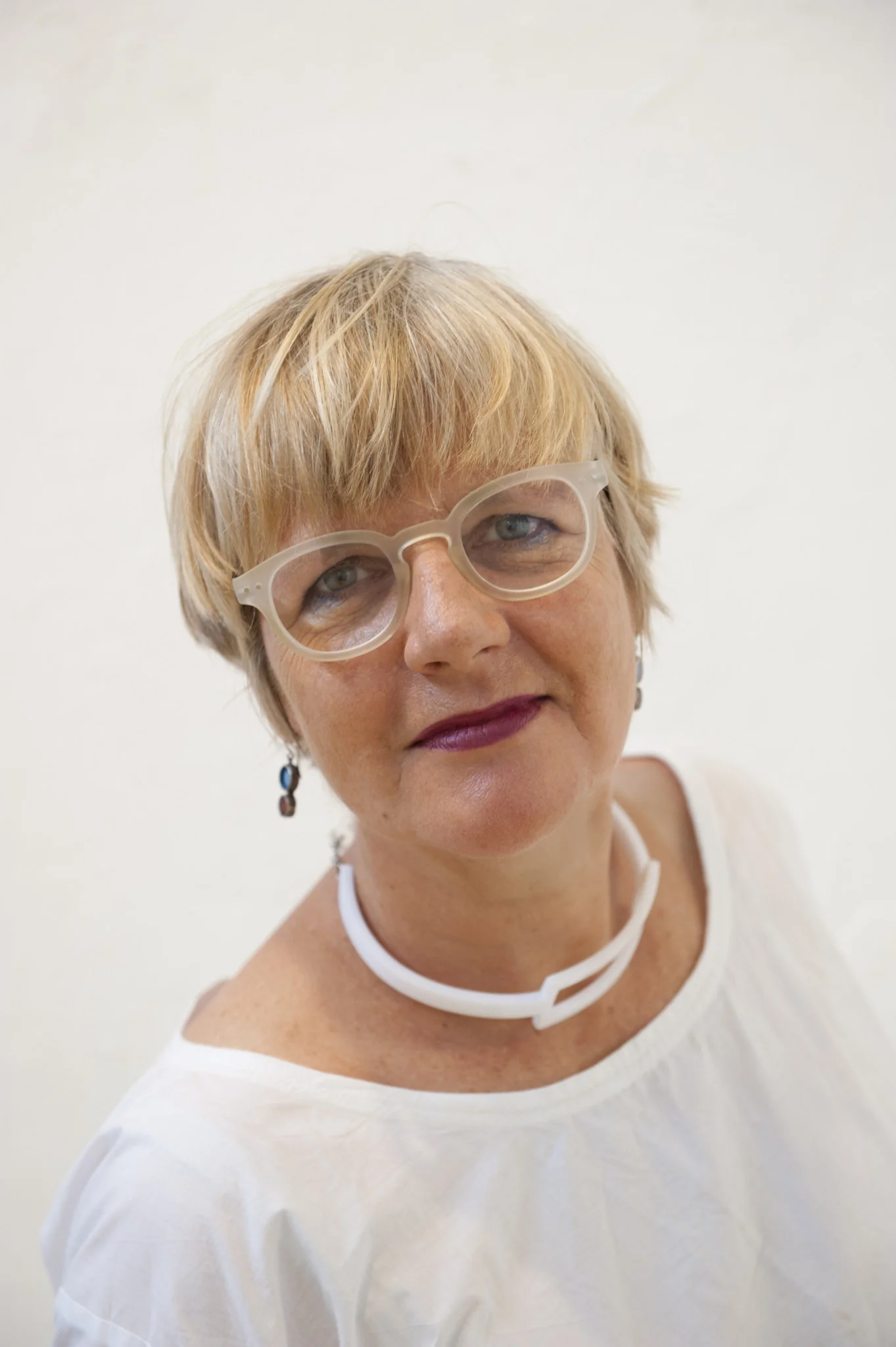
Mella Jaarsma
Netherlands, 1960
Curator
Mella Jaarsma was born in the Netherlands in 1960 and studied visual art at Minerva Academy in Groningen (1978-1984), after which she left the Netherlands to study at the Art Institute of Jakarta (1984) and at the Indonesian Institute of the Arts in Yogyakarta (1985-1986). She has lived and worked in Indonesia ever since. In 1988, she founded Cemeti Art House with Nindityo Adipurnomo, which to this day remains an important platform for artists and art workers in the country and region and which recently changed its name in Cemeti Institute for Art & Society. She is also a boardmember of the Indonesian Visual Art Archive and the Jogja Biennale Foundation.
Mella Jaarsma has become known for her complex costumes. Her works are are bodily modifications of the social space in between the layers of skin, clothing, sartorial inhibition and housing/ architecture. Her work has been presented widely in exhibitions in Indonesia as well as in international art events like; Yokohama Triennale (2005),’ Accidentally Fashion (2007)’. Museum of Contemporary Art – Taipei, RE-Addressing Identities (2009)- Katonah Museum -New York, ‘GSK Contemporary – Aware: Art Fashion Identity (2010)’, the Royal Academy of Arts, London, ‘Singapore Biennale (2011)’ - Singapore Art Museum, Suspended Histories (2013)–Van Loon Museum - Amsterdam, ‘Siasat’, Jakarta Biennale, Museum of Ceramics and Fine Arts, - ‘The Roving Eye’ (2014), Arter – Istanbul, The Sydney Biennale 20th’, (2016), etc.